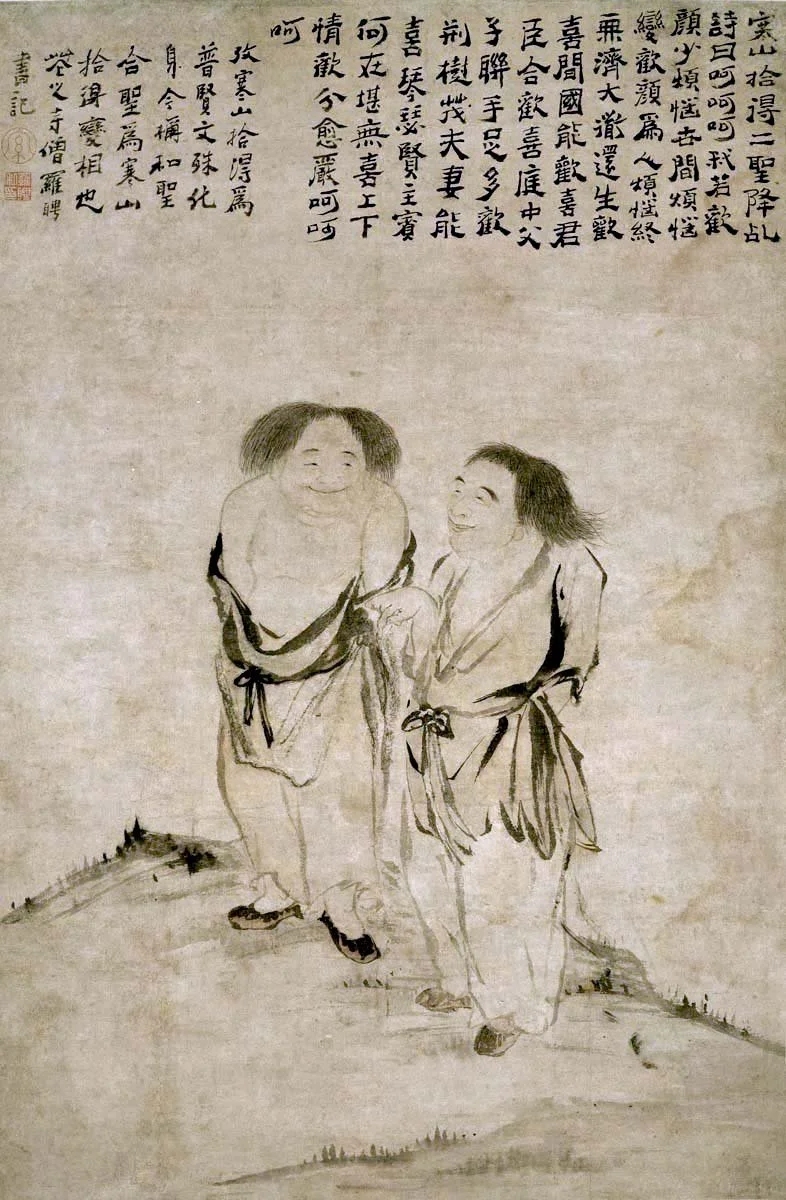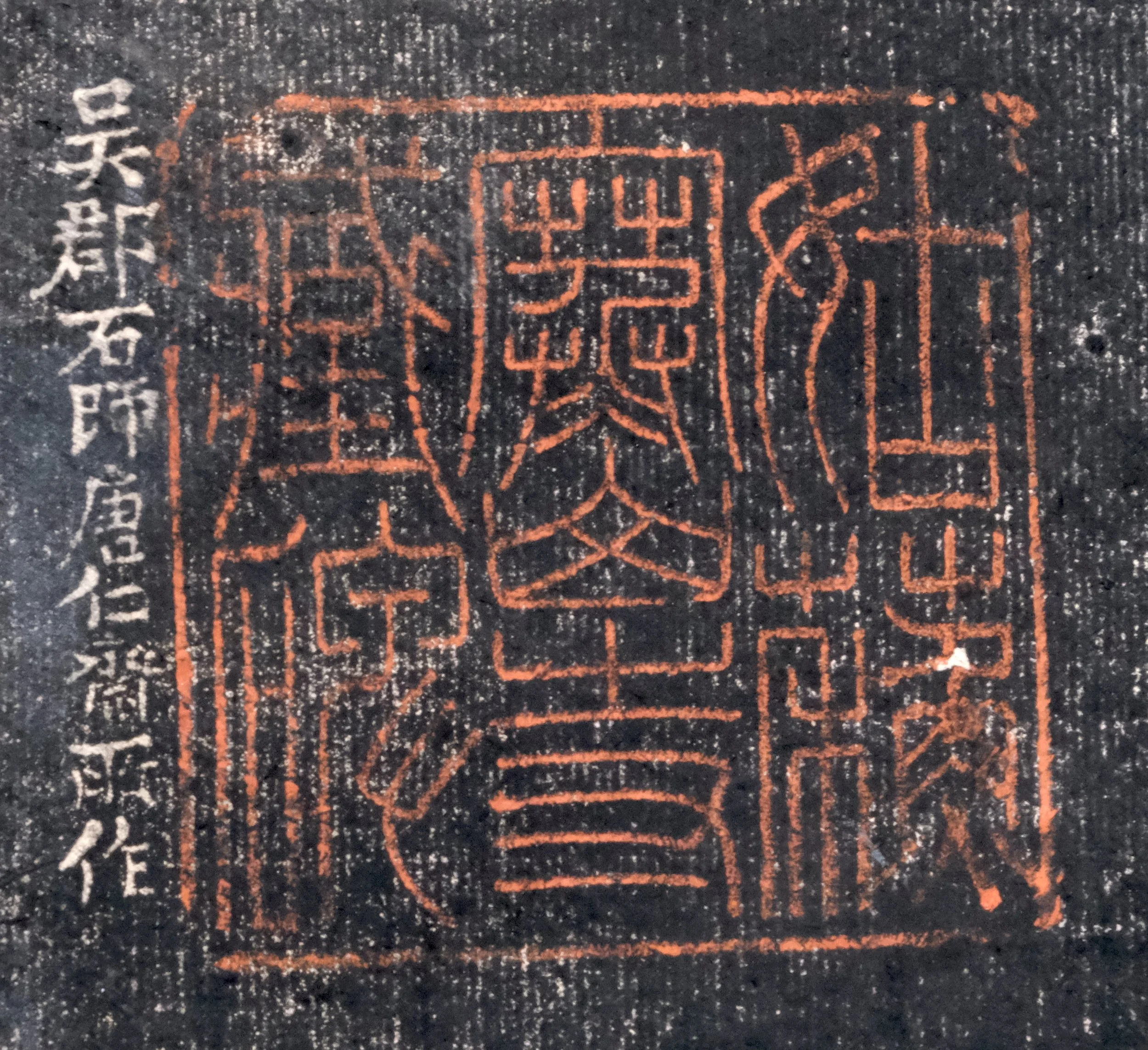He He Harmony
Here’s a rubbing from a tablet at the Hanshan Temple in Suzhou of Hanshan (寒山) and Shide (拾得), two Tang-dynasty free thinkers later deified as He He Erxian (和合二仙), the twin Immortals of Harmony.
Nothing definite is known about Hanshan and Shide, not even their dates or real names. They lived sometime in the seventh or eighth centuries; Hanshan – “Cold Mountain” – is named after the location of the cave he lived in, while Shide – “Picked Up” – comes from the fact that he was abandoned as an orphan and adopted by the Guoqing temple. Shide was a monk at the temple, where he worked in the kitchens, Hanshan a recluse who wandered about in the surrounding Tiantai mountains, but the two became great friends, and they have a firm place in Chinese folklore as joyous eccentrics who took great delight in the natural world and deflating institutional pomposity.
Several hundred poems are attributed to Hanshan, though some believe these were actually written by an official named Liu Jiuyin, who claimed to have copied them off the trees and rock faces where Hanshan originally scribbled them down. Either way, the verses poke fun at those seeking desperately for enlightenment while allowing themselves to be distracted by worldly concerns, not realising that everything they are looking for is right inside them. There’s a great translation of the poems by Bill Porter (aka Red Pine), The Collected Songs of Cold Mountain.
So back to the rubbing. The tablet was carved in the late nineteenth century by Tang Renzhai (唐仁齋) from a painting by Luo Ping (羅聘, 1733–1799), student of famous painter and calligrapher Jin Nong and youngest of the individualist artistic circle known as the “Eight Eccentrics of Yangzhou”.
Original painting by Luo Ping, now in the Nelson-Atkins Museum of Art, Kansas City
Stone carving might be a less subtle medium than paper and ink, but Tang Renzhai did a fantastic job at capturing the original variations in the brushwork, from the calligraphy to their clothes and even the monks’ fine heads of hair.
What, me worry?
I’m not up to accurately translating the text, but the main block on the right says something like (in part, and very freely):
Ho ho ho
If I am happy, I will have fewer troubles
And the world’s troubles will likewise cease
It is useless to be concerned about others
Follow the joy of the Dao
Then the country will be at ease
With monarchs and ministers, parents and children, husbands and wives
All in harmony
Ho ho ho
The block on the left translates: “Hanshan and Shide are considered the incarnation of Puxian and Wenshu [bodhisattvas of Wisdom and Acheivement], and are also canonised as the gods of Harmony and Unity. Written by Monk Luo Ping of the Temple of Flowers.”
The red seal reads “Stone Tablet Collection, Hanshan Temple, Gusu [Suzhou]”, while the vertical signature says “Made by Tang Renzhai, Stone Master, Wujun county”.
Thanks to CS Tang for deciphering the seal script.



